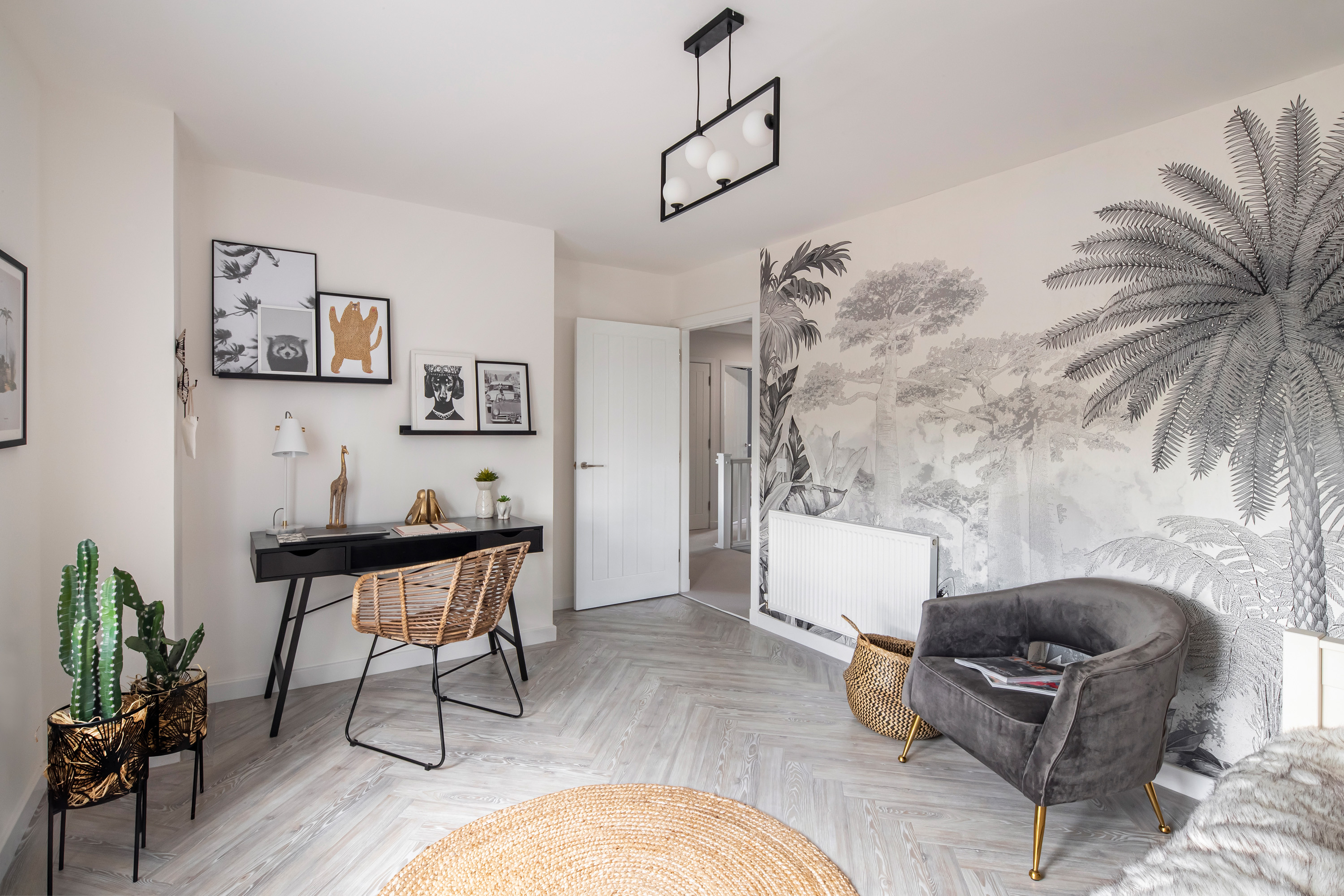Space-saving tips for a home office

It’s been 18 months since the UK was plunged into the first of several lockdowns and working life has never been the same since. An estimated 8.4 million people now work from home for at least part of the week, which is remarkable considering how many roles require employees to be ‘on-site’.
For people who already had a spare room and a powerful laptop, the switch to home working has generally been smooth. Yet many professionals have found themselves working from the dining table, or squashed into a dingy corner with PC cables trailing across the floor. Home office space has been a key driver behind 2021’s buoyant property market, and it’s a major benefit of owning a spacious new home.
Happily, it’s possible to create a dedicated workstation without consuming huge amounts of floorspace. Indeed, some of the space-saving solutions listed below don’t use any floorspace at all. That’s ideal if one room needs to fulfil multiple roles, or if you’re among the growing number of employees spending more time in the office with every passing month.
Furniture
Standing up for part of each working day improves posture and circulation, while reducing the risk of heart disease and weight gain. Standing desks generally require less space than their horizontal counterparts, and they’re ideal for short periods of typing or video conferencing.
If you have back pain or prefer the support of an orthopaedic chair, fold-down desks provide a base for a laptop and notepad before folding inconspicuously against the wall when not in use. Conventional desks can also be space-saving if they have a compact footprint and high-level storage capable of swallowing paperwork and peripherals. Speaking of which…
Hardware
Desktop computers have many attributes, but they can’t rival a laptop’s space-efficiency. As well as being fully portable, laptops can be combined with a docking station and wired accessories like a full-size keyboard and large monitor. Choose peripherals which perform multiple roles – a combined printer/scanner/copier, or a monitor that also serves as a TV. Wall-mountable screens eliminate bulky stands, freeing up desk space for other duties.
As well as combining several roles into one chassis, multifunctional devices minimise cabling. This is the nemesis of any tidy office, so look for wireless peripherals and solid-backed desks which hide plugs and leads. Cable tidies and trunking tubes also help to prevent wires encroaching onto compact workstations.
Storage
Finding a home for peripherals, paperwork and personal items is one of the biggest challenges in any home office. Fit shelving up to the ceiling, positioning occasional-use items at the top and everyday furnishings lower down. Look at the floor of your home office and then up at the ceiling – what else can you do to exploit all that redundant airspace? Would a bridging unit or full-height wardrobes be beneficial?
Don’t let whole-home belongings creep into a workspace, as this generally turns it into a clutter magnet. Stick to one of everything – one lamp, one family photo in a frame, etc. When space is limited, you need to prioritise essential items for doing your job, not nice-to-have extras. It also helps to delineate office space from living space, making it easier to draw a line under the working day and prevent work creep from consuming free time.
Back to Latest Posts




